📊 DBMS Data Models & ER Model - Complete Study Guide
1. Data Models Overview
Data Model is a conceptual representation of data structures, operations, and constraints that define how data is stored, organized, and manipulated in a database system.
🎯 Purpose of Data Models
- Abstraction: Hide complexity of physical storage
- Communication: Provide common language between stakeholders
- Design: Blueprint for database implementation
- Standardization: Ensure consistency across systems
2. Types of Data Models
2.1 Hierarchical Data Model

Hierarchical Data Model - Tree Structure
- Structure: Tree-like structure with parent-child relationships
- Root: Single root node at the top
- Navigation: Access through predefined paths
- Example: IMS (Information Management System) by IBM
| Advantages | Disadvantages |
|---|---|
| Simple and fast access | Rigid structure |
| Data integrity through hierarchy | No many-to-many relationships |
| Efficient for 1:N relationships | Data redundancy issues |
2.2 Network Data Model

Network Data Model - Graph Structure
- Structure: Graph-like structure with multiple parent-child relationships
- Sets: Collection of records connected by links
- CODASYL: Conference on Data Systems Languages standard
- Example: IDMS (Integrated Database Management System)
| Advantages | Disadvantages |
|---|---|
| Handles many-to-many relationships | Complex navigation |
| More flexible than hierarchical | Requires technical expertise |
| Better data access paths | Structural dependency |
2.3 Relational Data Model
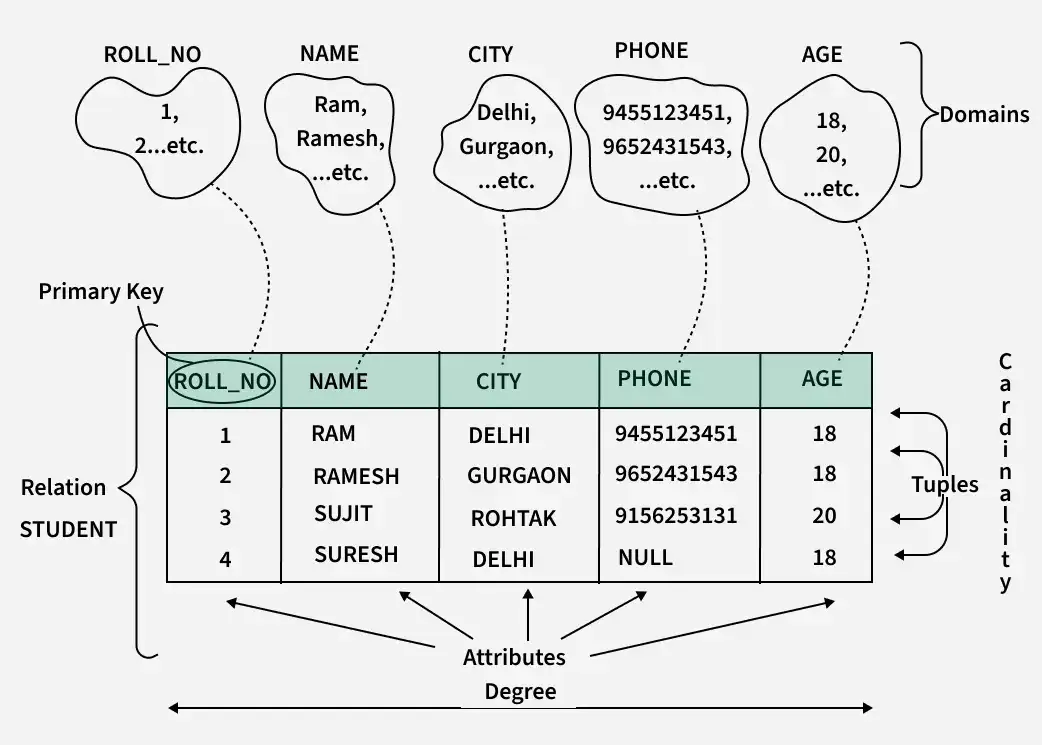
Relational Data Model - Table Structure
- Structure: Data organized in tables (relations)
- Rows (Tuples): Individual records
- Columns (Attributes): Data fields
- Keys: Primary keys, foreign keys for relationships
- Example: MySQL, PostgreSQL, Oracle
2.4 Object-Oriented Data Model

Object-Oriented Data Model - Class Structure
- Structure: Objects with attributes and methods
- Encapsulation: Data and methods bundled together
- Inheritance: Classes inherit from parent classes
- Polymorphism: Same method, different implementations
- Example: ObjectDB, db4o
| Data Model | Structure | Relationships | Best Use Case |
|---|---|---|---|
| Hierarchical | Tree | 1:N only | Simple, predictable data |
| Network | Graph | M:N allowed | Complex relationships |
| Relational | Tables | Keys & Joins | Most business applications |
| Object-Oriented | Objects | Inheritance & Composition | Complex data types |
3. Entity-Relationship (ER) Model
The ER Model is a high-level conceptual data model that describes the structure of a database using entities, attributes, and relationships.

ER Model Basic Components

ER Model Basic Components
3.1 Entities
- Definition: A thing or object in the real world that is distinguishable from other objects
- Entity Set: Collection of entities of the same type
- Types:
- Strong Entity: Has a primary key (Student, Employee)
- Weak Entity: Cannot exist without another entity (Dependent)
🌟 Real-World Entity Examples
| Entity Type | Entity Examples | Primary Key | Sample Attributes |
|---|---|---|---|
| Student | John Doe, Jane Smith, Alex Johnson | Student_ID | Name, Age, Email, Phone, Address |
| Employee | Mike Wilson, Sarah Brown, David Lee | Employee_ID | Name, Salary, Department, Hire_Date |
| Course | Database Systems, Java Programming, Data Structures | Course_ID | Course_Name, Credits, Duration, Prerequisites |
| Department | Computer Science, Electrical Engineering, Mathematics | Dept_ID | Dept_Name, Location, Budget, Head_Name |
| Book | Introduction to Algorithms, Operating Systems Concepts | ISBN | Title, Author, Publisher, Price, Pages |
3.2 Attributes
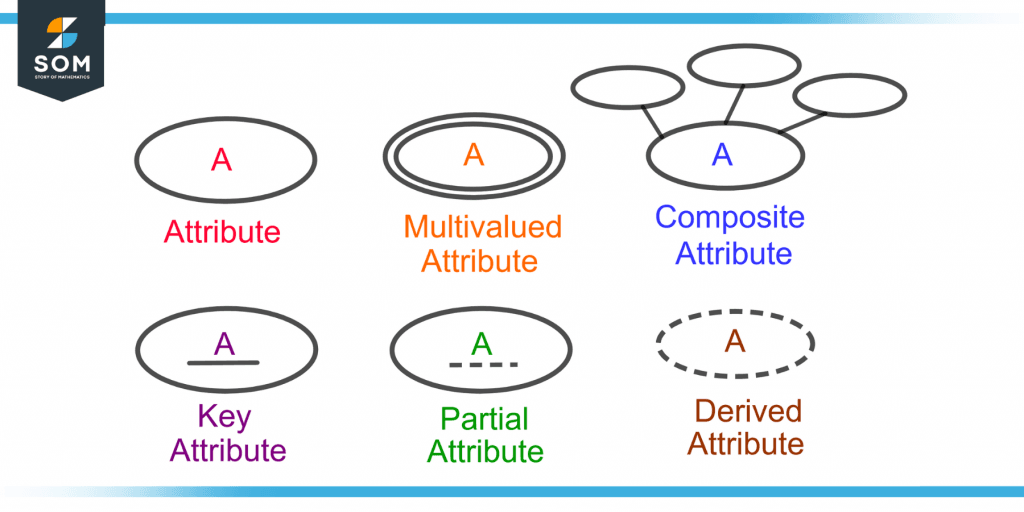
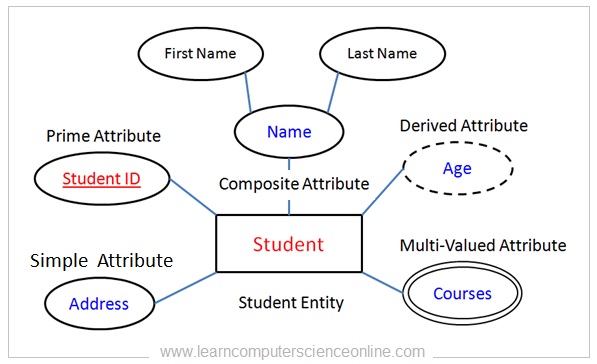
- Definition: Properties or characteristics of entities
- Types of Attributes:
- Simple: Cannot be divided further (Name, Age)
- Composite: Can be divided into sub-parts (Address = Street + City + ZIP)
- Single-valued: Has only one value (Student ID or addhar card ek hi hoga)
- Multi-valued: Can have multiple values (Phone Numbers ek se jada mobile number ho sakte hain)
- Derived: Calculated from other attributes (Age from Date of Birth)
- Key Attribute: Uniquely identifies entity instances
🌟 Real-World Attribute Examples
| Attribute Type | Entity: Student | Entity: Employee | Entity: Course |
|---|---|---|---|
| Simple | Student_ID, Name, Age | Employee_ID, Name, Salary | Course_ID, Course_Name, Credits |
| Composite | Address (Street, City, State, ZIP) | Address (Street, City, State, ZIP) | Schedule (Day, Time, Room) |
| Single-valued | Student_ID, Date_of_Birth | Employee_ID, Social_Security_Number | Course_ID, Max_Enrollment |
| Multi-valued | Phone_Numbers, Email_Addresses | Skills, Certifications | Prerequisites, Topics_Covered |
| Derived | Age (from Date_of_Birth), GPA | Years_of_Service, Age | Enrollment_Count, Average_Grade |
| Key | Student_ID | Employee_ID | Course_ID |
3.3 Relationships
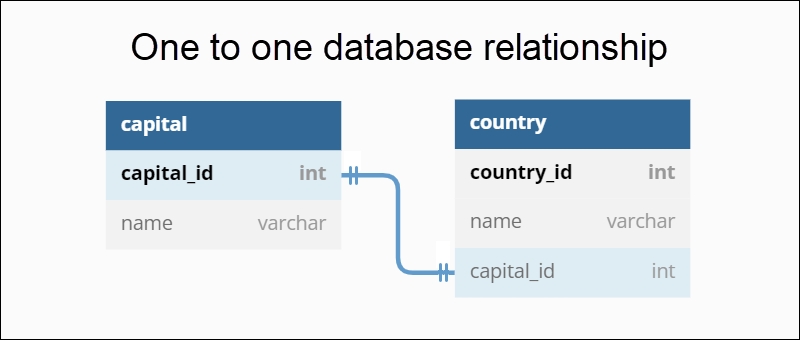
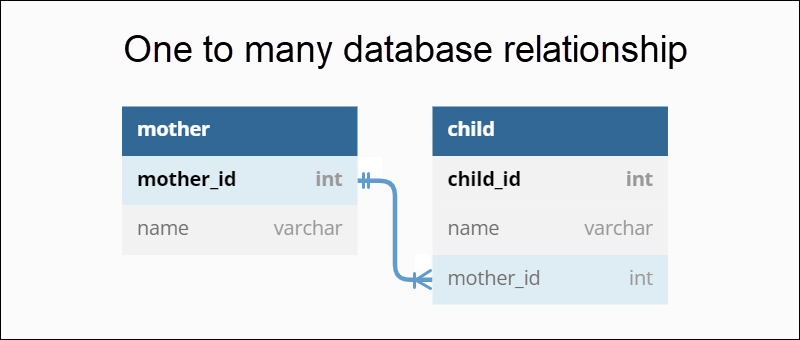
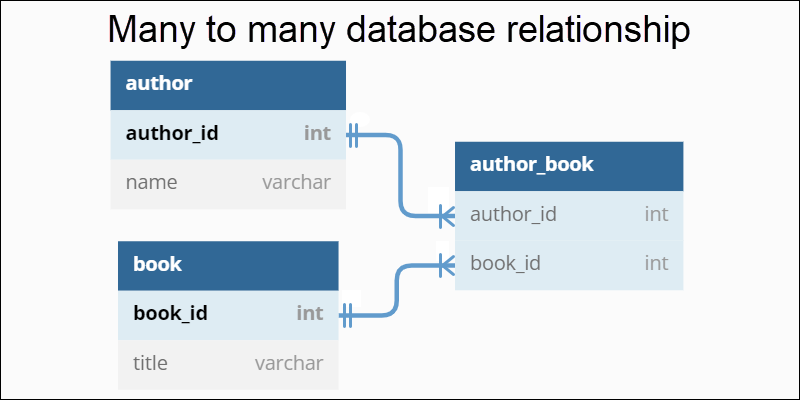
- Definition: Association between two or more entities
- Relationship Set: Collection of relationships of the same type
- Degree: Number of entities participating in relationship
- Unary: One entity type (Employee manages Employee)
- Binary: Two entity types (Student enrolls in Course)
- Ternary: Three entity types (Student, Course, Instructor)
🌟 Real-World Relationship Examples
| Relationship | Entity 1 | Entity 2 | Cardinality | Real Example |
|---|---|---|---|---|
| Works_In | Employee | Department | N:1 | John works in Computer Science Dept
Jane works in Electrical Engineering Dept |
| Enrolls_In | Student | Course | M:N | Alice enrolls in Database Systems
Alice enrolls in Computer Networks Bob enrolls in Database Systems Bob enrolls in Computer Networks |
| Manages | Employee | Department | 1:1 | Dr. Smith manages CS Department |
| Teaches | Instructor | Course | 1:N | Prof. Johnson teaches 3 courses
Dr. Williams teaches 2 courses |
| Borrows | Student | Book | M:N | Students can borrow multiple books |
| Supervises | Employee | Employee | 1:N (Unary) | Manager supervises multiple employees |
📊 Sample Data Tables
Student Table
| Student_ID | Name | Age | Phone | |
|---|---|---|---|---|
| S001 | John Doe | 20 | john@email.com | +1-555-0123 |
| S002 | Jane Smith | 19 | jane@email.com | +1-555-0124 |
| S003 | Alex Johnson | 21 | alex@email.com | +1-555-0125 |
Employee Table
| Employee_ID | Name | Salary | Department | Hire_Date |
|---|---|---|---|---|
| E001 | Mike Wilson | 75000 | Computer Science | 2020-01-15 |
| E002 | Sarah Brown | 85000 | Electrical Engineering | 2019-08-20 |
| E003 | David Lee | 90000 | Computer Science | 2018-03-10 |
Course Table
| Course_ID | Course_Name | Credits | Instructor | Max_Enrollment |
|---|---|---|---|---|
| CS101 | Database Systems | 3 | Dr. Smith | 30 |
| CS102 | Java Programming | 4 | Prof. Johnson | 25 |
| CS103 | Data Structures | 3 | Dr. Williams | 35 |
Student_Course (M:N Relationship) Table
| Student_ID | Course_ID | Enrollment_Date | Grade |
|---|---|---|---|
| S001 | CS101 | 2024-01-15 | A |
| S001 | CS102 | 2024-01-15 | B+ |
| S002 | CS101 | 2024-01-16 | A- |
| S003 | CS103 | 2024-01-17 | B |
4. ER Diagrams
Visual representation of the ER model using standardized symbols.

ER Diagram Symbols and Notation
4.1 ER Diagram Symbols
| Symbol | Representation | Description |
|---|---|---|
| Rectangle | Entity | Strong entity set |
| Double Rectangle | Weak Entity | Weak entity set |
| Diamond | Relationship | Relationship set |
| Ellipse | Attribute | Simple attribute |
| Double Ellipse | Multi-valued | Multi-valued attribute |
| Dashed Ellipse | Derived | Derived attribute |
| Underlined | Key | Key attribute |
5. Cardinality and Participation
5.1 Cardinality
Cardinality defines the number of entity instances that can be associated with another entity instance through a relationship.
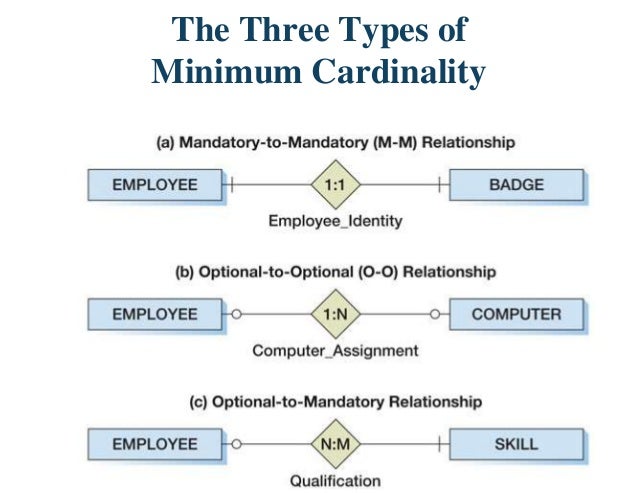
Different Types of Cardinality
| Cardinality Type | Description | Example |
|---|---|---|
| One-to-One (1:1) | Each entity in A relates to at most one entity in B | Person ↔ Passport |
| One-to-Many (1:N) | Each entity in A relates to many entities in B | Department → Employees |
| Many-to-One (N:1) | Many entities in A relate to one entity in B | Students → Course |
| Many-to-Many (M:N) | Many entities in A relate to many entities in B | Students ↔ Courses |
🌟 Real-World Cardinality Examples with Data
1:1 Relationship - Employee and Office
| Employee Table | ||
|---|---|---|
| Emp_ID | Name | Office_ID |
| E001 | John | O101 |
| E002 | Jane | O102 |
| E003 | Mike | O103 |
| Office Table | ||
|---|---|---|
| Office_ID | Room_No | Floor |
| O101 | 101 | 1st |
| O102 | 102 | 1st |
| O103 | 201 | 2nd |
Each employee has exactly one office, and each office is assigned to exactly one employee.
1:N Relationship - Department and Employee
| Department Table | |
|---|---|
| Dept_ID | Dept_Name |
| D001 | Computer Science |
| D002 | Mathematics |
| Employee Table | ||
|---|---|---|
| Emp_ID | Name | Dept_ID |
| E001 | John | D001 |
| E002 | Jane | D001 |
| E003 | Mike | D002 |
| E004 | Sarah | D001 |
One department can have many employees, but each employee belongs to exactly one department.
M:N Relationship - Student and Course
| Student Table | |
|---|---|
| Stud_ID | Name |
| S001 | Alice |
| S002 | Bob |
| S003 | Charlie |
| Course Table | |
|---|---|
| Course_ID | Course_Name |
| C001 | Database |
| C002 | Java |
| C003 | Data Structures |
| Enrollment Table (Bridge Table) | |||
|---|---|---|---|
| Stud_ID | Course_ID | Semester | Grade |
| S001 | C001 | Fall 2024 | A |
| S001 | C002 | Fall 2024 | B+ |
| S002 | C001 | Fall 2024 | A- |
| S002 | C003 | Fall 2024 | B |
| S003 | C002 | Fall 2024 | A |
| S003 | C003 | Fall 2024 | B+ |
Many students can enroll in many courses. A bridge table is needed to represent this M:N relationship.
5.2 Participation
Participation defines whether all entities in an entity set must participate in a relationship.
- Total Participation (Mandatory): Every entity must participate in the relationship
- Represented by double line
- Example: Every employee must work in a department
- Partial Participation (Optional): Some entities may not participate in the relationship
- Represented by single line
- Example: Not every employee manages a department
6. Advanced ER Concepts
6.1 Generalization

- Definition: Process of extracting common attributes from multiple entities to form a generalized entity
- Bottom-up approach: Multiple specific entities → General entity
- Example: Car, Truck, Bus → Vehicle
6.2 Specialization

- Definition: Process of defining sub-classes of an entity set
- Top-down approach: General entity → Specific entities
- Example: Employee → Manager, Developer, Tester

Generalization and Specialization Example
6.3 Aggregation
- Definition: Abstraction where relationship sets are treated as higher-level entities
- Purpose: Eliminate redundancy in ER diagrams
- Example: (Student, Course, Instructor) relationship can be aggregated and related to Grade

Aggregation in ER Model
6.4 Specialization/Generalization Constraints
| Constraint | Description | Notation |
|---|---|---|
| Disjoint | Entity can belong to at most one subclass | d in circle |
| Overlapping | Entity can belong to multiple subclasses | o in circle |
| Total | Every entity must belong to at least one subclass | Double line |
| Partial | Some entities may not belong to any subclass | Single line |
💼 Interview Preparation Section
🔥 Common Interview Questions
1. What is the difference between Entity and Attribute?
Answer: Entity is a thing or object (like Student, Course), while Attribute is a property of an entity (like Name, Age of Student).
2. Explain different types of cardinality with examples.
Answer:
- 1:1 - Person and Passport (one person has one passport)
- 1:N - Department and Employee (one department has many employees)
- M:N - Student and Course (many students enroll in many courses)
3. What is the difference between Generalization and Specialization?
Answer: Generalization is bottom-up (specific → general), Specialization is top-down (general → specific).
4. When do you use Aggregation in ER Model?
Answer: When you need to treat a relationship as an entity to form relationships with other entities.
5. What is the difference between Strong and Weak Entity?
Answer: Strong entity has its own primary key, weak entity depends on another entity for identification.
⚡ Quick Tips for Interviews
- Always provide real-world examples when explaining concepts
- Draw simple diagrams if asked about ER concepts
- Remember the symbols used in ER diagrams
- Understand the practical applications of each data model
- Know when to use aggregation vs. generalization
🎯 Key Differences to Remember
| Concept A | Concept B | Key Difference |
|---|---|---|
| Entity | Attribute | Entity is a thing, Attribute is a property |
| Strong Entity | Weak Entity | Strong has own key, Weak depends on others |
| Total Participation | Partial Participation | Total is mandatory, Partial is optional |
| Generalization | Specialization | Bottom-up vs Top-down approach |
📚 Revision Box - Quick Summary
🔑 Key Terms
- Data Model: Conceptual representation of data structure
- Entity: Real-world object that can be distinctly identified
- Attribute: Property or characteristic of an entity
- Relationship: Association between entities
- Cardinality: Number of entity instances in relationships
- Participation: Whether entities must participate in relationships
📊 Data Models Comparison
| Model | Key Feature | Main Advantage | Main Disadvantage |
|---|---|---|---|
| Hierarchical | Tree Structure | Fast Access | Rigid Structure |
| Network | Graph Structure | Flexible Relationships | Complex Navigation |
| Relational | Table Structure | Simplicity & Flexibility | Performance Issues |
| Object-Oriented | Objects & Methods | Real-world Modeling | Complexity |
🎯 Must Remember for Interviews
- Four types of cardinality: 1:1, 1:N, N:1, M:N
- ER diagram symbols: Rectangle (Entity), Diamond (Relationship), Ellipse (Attribute)
- Participation types: Total (mandatory), Partial (optional)
- Advanced concepts: Generalization, Specialization, Aggregation
- Attribute types: Simple, Composite, Single-valued, Multi-valued, Derived
⚡ Last-Minute Checklist
- ✅ Can explain all four data models with examples
- ✅ Know ER diagram symbols and their meanings
- ✅ Understand cardinality and participation concepts
- ✅ Can differentiate between generalization and specialization
- ✅ Remember real-world examples for each concept
- ✅ Know when to use aggregation in ER modeling